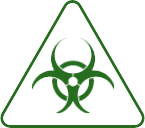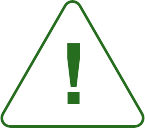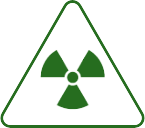
Personal Protective Equipment (PPE) training is required for individuals who work with or are exposed to hazardous materials and must be provided to workers and supervisors involved in such operations. Training is required prior to employees using any equipment.

The Personal Protective Equipment (PPE) course is also required training for employees who do not receive adequate protection from hazards by administrative or engineering controls. OSHA requires the use of PPE to reduce exposures to hazards. Employers are required to determine if PPE should be used in their workplace.

The primary purpose of the Personal Protective Equipment course is to provide employees and emergency first responders with the information needed to assist them in their selection of both respiratory and percutaneous (skin) PPE.
We've designed our Personal Protective Equipment course with your time in mind. Log in and out of this self-paced class as you need and all of your progress will be saved right where you left off. With NET, you can complete your training at your own convenience.
Take the course from a desktop, laptop, tablet, or even a smartphone.
Download your e-certificate immediately upon completing the course.
The PPE course counts as continuing education units (CEUs). This course is accepted for .167 Industrial Hygiene CM Points by the American Board of Industrial Hygiene (ABIH) and .1 Continuance of Certification (COC) points from the Board of Certified Safety Professionals (BCSP).
Access phone, email or Live Chat support throughout the course.
“We enjoyed the content and delivery of your training.” S. Maide, U.S. EPA
The Personal Protective Equipment course consists of a full-length video featuring interactive animations and content with audio narration. Students complete quizzes and a final exam, allowing you to start and stop as needed.
This 1-hour course counts as a Continuing Education Unit (CEU) accredited by the ABIH and BCSP. Students have up to 180 days to complete the course upon registration.
Group discounts are available for parties of 2 or more.
Our Personal Protective Equipment course is intended to be more practical than technical and provides information about the many factors that should be considered when purchasing and using personal protective equipment.
Topics covered in this modular course include:
This course is eligible for .1 Continuance of Certification (COC) points from the Board of Certified Safety Professionals (BCSP).
This course has no prerequisites.
OSHA regulations require site-specific training for Personal Protective Equipment. OSHA-approved Plan States must have standards that are at least equal to Federal HAZWOPER training requirements and may have additional requirements of their own.
To ensure the greatest possible protection for employees in the workplace, the cooperative efforts of both employers and employees will help in establishing and maintaining a safe and healthful work environment. If PPE is to be used, a PPE program should be implemented. This program should address the hazards present; the selection, maintenance, and use of PPE; the training of employees; and monitoring of the program to ensure its ongoing effectiveness.
In general, employers are responsible for:
In general, employees should: